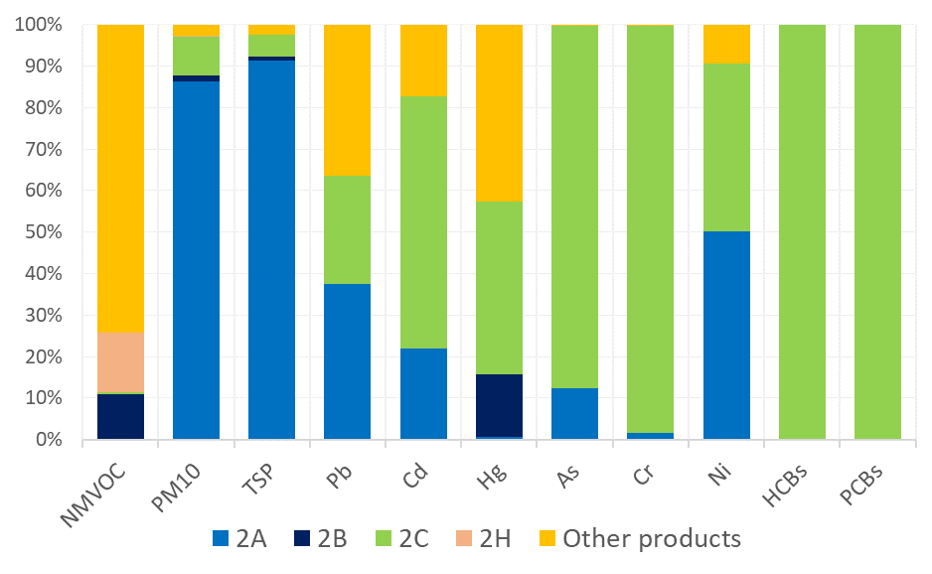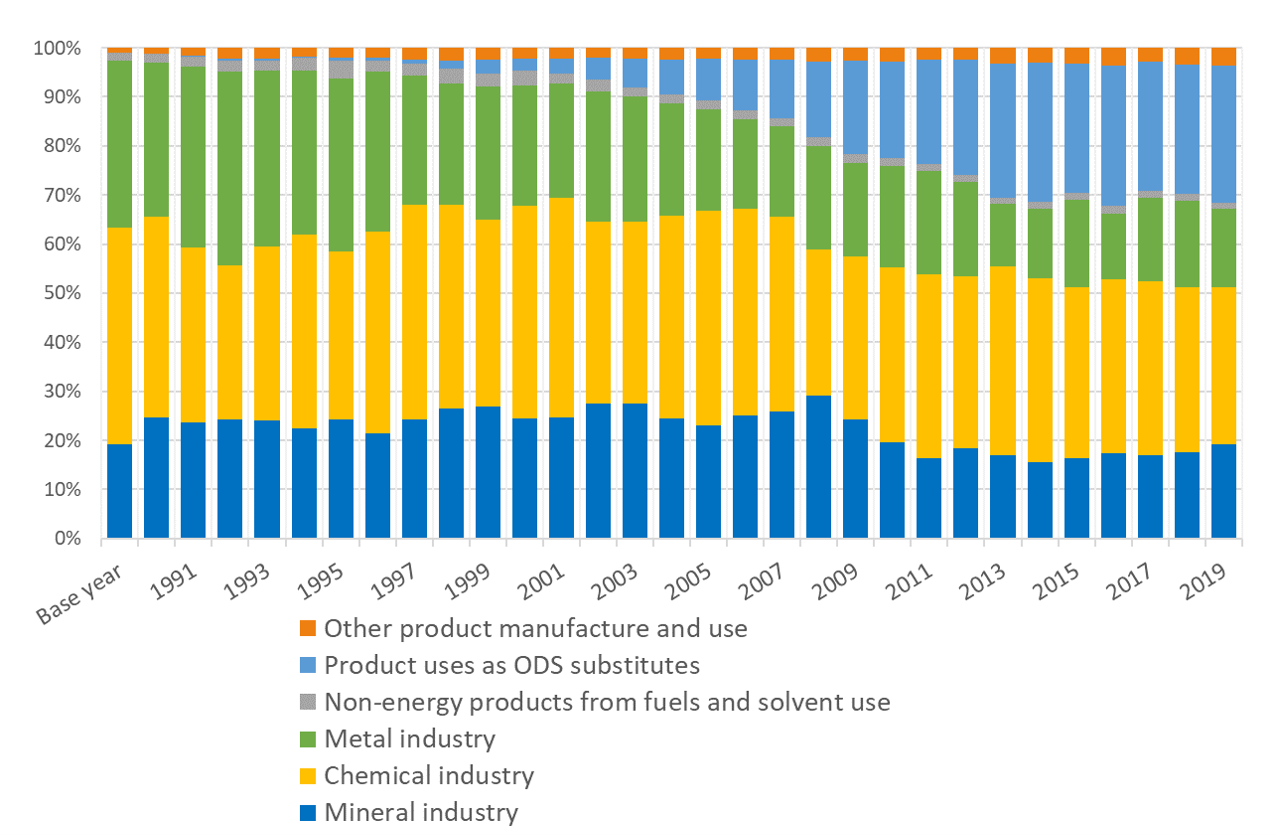Industry
The industrial processes and other product use sector (IPPU) includes the emissions of pollutants into the atmosphere from the manufacture of products under industrial conditions and from the use of products by households (solvents and other products use). The pollutants that should be reported in the inventory of air pollutants all appear in this sector, as it includes a number of activities and products, which are:
- Mineral industry (2A): cement, lime and glass production; brick, tile and ceramics production (greenhouse gases only), mining, construction of buildings and roads
- Chemical industry (2B): production of ammonia and fertilisers, nitric and sulphuric acid, other chemical products (e.g. ethylene, propylene, industrial carbon black, plastics, formaldehyde, etc.)
- Metal industry (2C): iron, steel and aluminium industry, zinc and copper foundry
- Use and production of solvents and other products (2D): e.g. household cleaning products, personal care products, dry cleaning, surface treatment, paints, varnishes, fireworks, tobacco
- Food industry (2H1)
- Paper industry (2H2), wood processing (2I)
Figure 1. shows the distribution of industrial emissions by subcategory and by major pollutants of IPPU sector.

Figure 1 : Emissions of industry by subcategory for the main pollutants in 2019 (%)
Figure 1. shows the distribution of emissions by subcategory and by major pollutants in IPPU sector. Emission of HCBs (hexachlorobenzene), PCBs (polychlorinated biphenyls), chromium and arsenic are mainly due to metal foundries. More detailed, HCB emissions come from the so-called secondary aluminium foundry (recycling of aluminium waste), while arsenic, chromium and PCBs are mainly emitted during steel production.
41 percent of national TSP (total suspended material, i.e. mass concentration of particulate matter) emissions come from industrial activities, mainly from the mineral industry. By far, most particulate matter and larger diameter aerosol particles are emitted during road construction, but particles are also emitted into the atmosphere from cement production, surface mining, and building construction and demolition.
IPPU sector (mainly using of domestic solvents) is responsible for 32% of national total NMVOC (non-methane volatile organic compounds) emissions. Household solvents, industrial and residential use of paints, food and beverage production, pharmaceuticals and other chemical products (polyurethane foams, polystyrene foams, shoe production), industrial printing and the production of certain chemical raw materials are the main emitters.
Heavy metals such as mercury, lead, nickel and cadmium are released into the atmosphere in large quantities during iron and steel production. These activities account for a large part of the total emissions of these substances in the industrial sector.
Data for the full time series and more information on these pollutants are found in the relevant sections of Trends.
The industrial processes sector (IPPU) was the second largest sector (slightly overtaking the agriculture sector), contributing 12% to total GHG emissions in 2019. The most important greenhouse gas was CO2, contributing 67% to total sectoral GHG emissions, followed by F-gases with 29%. In 2019, 32% of the emissions came from chemical industry, followed by 28% from product uses as ozone depleting substitutes (ODS). Mineral industry has 19%, metal industry has 16% contribution to sectoral GHG emissions, respectively. Other product uses (containing SF6 and N2O) and non-energy products from fuels and solvent use have the smallest influence on the 2019 IPPU inventory with 4% and 1%, respectively. Process related industrial emissions decreased by 49% between the base year and 2019, and by 15% between 2005 and 2019.
Figure 1: Trends in emissions from IPPU sector between 1990 and 2019
GHG emissions from the iron and steel producing sector decreased by 10% compared to 2018 because of the decreasing production of pig iron. While production of ammonia and urea increased in 2019, emissions form the chemical industry sector decreased by 1%. Production of mineral industry shows an increasing trend from 2013, GHG emissions from this sector were 7% higher in 2019 than in 2018.
A third of industrial emissions come from the operation of equipment containing F-gases and from use of F-gas containing products. Category 2.F.1. (Refrigeration and air-conditioning) accounts for 92% of total F-gas emissions, which is still increasing. Despite the continuous regulation of high GWP gases emission has not already stopped in this sector. Although, charging into new equipment for some gases already is forbidden, a lot of cooling systems have been operated with gases which have higher GWP and this is the reason of this trend.




